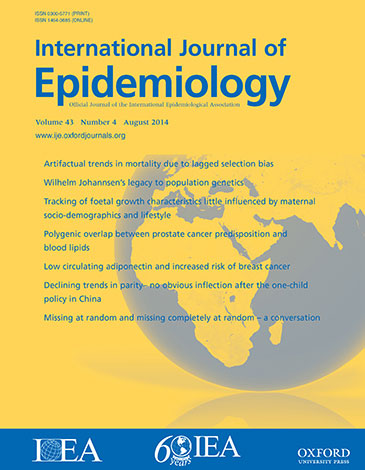Estimating and presenting non-linear associations with restricted cubic splines.
IF 5.9
2区 医学
Q1 PUBLIC, ENVIRONMENTAL & OCCUPATIONAL HEALTH
引用次数: 0
Abstract
Most of the regression models commonly used in epidemiology-including logistic regression and methods for time-to-event outcomes such as Cox regression-define the relationship between a set of covariates and the outcome of interest using linear functions, thus making implicit assumptions of linearity for continuous covariates. Categorizing continuous covariates, which represents a common option to address non-linearities, introduces additional assumptions and has recognized limitations in terms of results interpretation. Restricted cubic splines (RCS) offer a flexible alternative tool that can improve the model fit in the presence of non-linear associations, overcoming many of the limitations of categorical approaches and providing information on the shape of the exposure-outcome relationship. Including RCS transformations in regression models, however, is not straightforward analytically and presents challenges in terms of interpretation and graphical presentation of the exposure-outcome association. In this paper, we provide an introduction to the application of RCS in regression modeling for assessing non-linear exposure-outcome associations in epidemiological studies. We present RCS as a flexible extension of categorization and describe the two key steps of integrating RCS in regression: model fitting and graphical presentation. We detail key considerations that can guide the choice of RCS transformations, the interpretation of regression output, and the translation of regression results into graphical displays of the exposure-outcome association. To accompany this presentation, we also provide a set of functions and examples in R, Stata, and SAS, thereby providing a comprehensive set of tools for flexibly and robustly incorporating continuous covariates into regression modeling.用受限三次样条估计和表示非线性关联。
流行病学中常用的大多数回归模型——包括逻辑回归和Cox回归等时间-事件结果方法——使用线性函数定义一组协变量与目标结果之间的关系,从而对连续协变量进行隐含的线性假设。对连续协变量进行分类是解决非线性问题的一种常用方法,它引入了额外的假设,并且在结果解释方面存在公认的局限性。限制三次样条(RCS)提供了一种灵活的替代工具,可以在存在非线性关联的情况下改善模型拟合,克服了分类方法的许多局限性,并提供了有关暴露-结果关系形状的信息。然而,在回归模型中包括RCS转换在分析上并不简单,并且在暴露-结果关联的解释和图形表示方面提出了挑战。在本文中,我们介绍了RCS在回归模型中的应用,以评估流行病学研究中的非线性暴露-结果关联。我们将RCS作为分类的灵活扩展,并描述了在回归中集成RCS的两个关键步骤:模型拟合和图形表示。我们详细介绍了可以指导RCS转换选择的关键考虑因素,回归输出的解释,以及将回归结果转换为暴露-结果关联的图形显示。为了配合本演讲,我们还提供了R、Stata和SAS中的一组函数和示例,从而提供了一套全面的工具,可以灵活而稳健地将连续协变量纳入回归建模中。
本文章由计算机程序翻译,如有差异,请以英文原文为准。
求助全文
约1分钟内获得全文
求助全文
来源期刊

International journal of epidemiology
医学-公共卫生、环境卫生与职业卫生
CiteScore
13.60
自引率
2.60%
发文量
226
审稿时长
3 months
期刊介绍:
The International Journal of Epidemiology is a vital resource for individuals seeking to stay updated on the latest advancements and emerging trends in the field of epidemiology worldwide.
The journal fosters communication among researchers, educators, and practitioners involved in the study, teaching, and application of epidemiology pertaining to both communicable and non-communicable diseases. It also includes research on health services and medical care.
Furthermore, the journal presents new methodologies in epidemiology and statistics, catering to professionals working in social and preventive medicine. Published six times a year, the International Journal of Epidemiology provides a comprehensive platform for the analysis of data.
Overall, this journal is an indispensable tool for staying informed and connected within the dynamic realm of epidemiology.
 求助内容:
求助内容: 应助结果提醒方式:
应助结果提醒方式:


